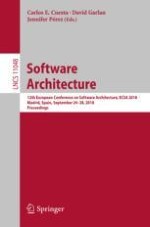2018 | OriginalPaper | Buchkapitel
Two Architectural Threat Analysis Techniques Compared
verfasst von : Katja Tuma, Riccardo Scandariato
Erschienen in: Software Architecture
Aktivieren Sie unsere intelligente Suche, um passende Fachinhalte oder Patente zu finden.
Wählen Sie Textabschnitte aus um mit Künstlicher Intelligenz passenden Patente zu finden. powered by
Markieren Sie Textabschnitte, um KI-gestützt weitere passende Inhalte zu finden. powered by
